Page 257 of 316

th e f unct ion of the tire pressure monitor
ing system*.
- Always inflate tires to the recommended
and correct tire pressure before driving
off.
- Driving with under inflated tires bend
more, letting them get too hot resu lting
in tread separation, sudden t ire failure
and loss of control.
- Excessive speed and/overloading can
cause heat build-up, sudden tire fail ure
and loss of control.
- If the t ire pressure is too low or too high,
the tires w ill wea r prematurely and the
vehicle will not hand le we ll.
- If the t i re is not flat and you do not have
to change a w heel immed iate ly, dr ive at
reduced speed to the nearest serv ice sta
t ion to check the tire pressure and add
air as requi red.
{Q) Note
Dr iving without va lve stem caps ca n cause
damage to the tire va lves . To preve nt this,
always ma ke s ure t hat facto ry installed
va lve stem caps on all wheels a re secu re ly
mounte d on the va lve.
@ For the sake of the environment
Unde rinflat ed tires will a lso inc reas e the
fue l cons umption .
Tires and vehicle load limits
There are l imits to the amo un t of load or
weight that any vehicle and any tire can carry .
A veh icle that is overloaded w ill not handle
w ell and is more difficult to stop. Overload ing
can not only lead to loss of vehicle contro l,
but c an a lso damage import ant parts of the
ve hicle and can lead to sudden tire failure, in
cluding a blowout and sudden deflation that
can cause the ve hicle to crash .
Your safety and that of your passengers a lso
depends on making sure that load limits are n ot exceeded. Vehicle load includes everybody
and everyth ing in and on the vehicle . Th ese
Tire s an d wheel s 255
load lim its are technically referred to as the
vehicle's
Gross Vehicle Weight Rating
("GVWR").
T he "GVWR" incl udes the weight of the basic
vehicle, a ll factory installed accessories, a f ull
tan k of fuel, oi l, coo lant and other fluids plus
max imum load. The max imum load incl udes
the n umber of passengers t hat the vehicle is
intended to carry ("seat ing capac ity") with an
ass umed we ight of 150 lbs (68 kg) fo r each
passenger at a designated seating posi tion
and the tota l weight of a ny luggage i n the ve
hicle. If you tow a tra ile r, the we igh t of the
tra iler hi tch and the tongue we igh t of t he
loaded tra iler mus t be included as part of the
vehicle load .
T he
Gro ss Axle Weight Rating (" G AWR ") is
the max imum load th at can be appl ied a t each
of the veh icle's two axles .
T he Gross Vehicle Weight Rat ing and t he
G ross Ax le Weig ht Ra ting are listed on the
sa fe ty comp lian ce sti cke r la bel lo cate d on the
driver's side B-pillar. Yo ur Audi has
5 seat ing
pos itions , 2 in the front and 3 in the rea r for
total seating capacity of 5. Eac h seating posi
tion has a seat be lt
c:> page 149, Safety belts.
T he fac t that there is an upper limit to yo ur
vehicle's Gross Vehicle Weight Rating means
that the total weight of whatever is being car ried in the vehicle ( includ ing the weight of a
trailer hitch and the tongue weight of the
loaded tra iler) is lim ited. The more passen
gers in the vehicle or passengers w ho are
heavier than the sta ndard we ights assumed
mea n that less we ight can be ca rried as lug
gage.
T he tire pressure label on your Audi also lists
the max imum combined weight of all of the
occupants and l uggage or other cargo that
the ve hicl e can ca rry . Fo r th e lo cat ion of the
la bel
c:> page 251, fig. 205 .
_&. WARNING
--==
Overloading a vehicle can cause loss o f ve -
h icle cont ro l, a crash or other accide nt, se-
rious pe rsonal in ju ry, and even death. ..,
•
•
Page 258 of 316

256 Tires and wheels
-Carrying more weight than your vehicle
was designed to carry will prevent the
vehicle from handling properly and in
crease the risk of the loss of vehicle con
trol.
- The brakes on a vehicle that has been
overloaded may not be able to stop the
vehicle within a safe distance.
- Tires on a vehicle that has been overload
ed can fail suddenly , including a blowout
and sudden deflation, causing loss of
control and a crash.
- Always make sure that the total load be
ing transported -including the weight of
a trailer hitch and the tongue weight of a
loaded trailer -does not make the vehi
cle heavier than the vehicle's Gross Vehi
cle Weight Rating.
Determining correct load limit
Use the example below to cal
culate the total weight of the
passengers and luggage or oth
er things that you plan to trans
port so that you can make sure
that your vehicle will not be
overloaded.
Steps for Determining Correct Load Limit
1. Locate the statement "THE
COMBINED WEIGHT OF OC
CUPANTS AND CARGO
SHOULD NEVER EXCEED XXX
KG OR XXX LBS" on your ve
hicle's placard (tire inflation
pressure label)
¢ page 251,
fig. 205.
2. Determine the combined
weight of the driver and pas
sengers that will be riding in
your vehicle.
3. Subtract the combined weight of the driver and pas
sengers from
"XXX" kilo
grams or
"XXX" pounds
shown on the sticker
¢ page 251, fig. 205.
4. The resulting figure equals
the available amount of car
go and luggage load capaci
ty. For example, if the
"XXX"
amount equals 1400 lbs.
and there will be five 150
lbs. passengers in your vehi
cle, the amount of available
cargo and luggage load ca
pacity is 650 lbs. (1400-7 SO
(5
X 150) = 650 lbs.)
5. Determine the combined weight of luggage and cargo
being loaded on the vehicle.
That weight may not safely
exceed the available cargo
and luggage load capacity
calculated in Step 4.
6. If your vehicle will be towing
a trailer, load from your trail
er will be transferred to your
vehicle. Consult this manual ..,
Page 259 of 316

to determ ine ho w th is re
du ces the avail a bl e c argo
and luggage l oad ca pa city of
yo ur vehicle .
.,. Check th e tir e s idew all
(¢ pa ge 2 58, fig. 209) to de
termin e the d esign ated lo ad
rating f or a specific tire .
Tire service life
The service life of tires depends on a lot of
different things including proper installation
and balancing, correc t tire pressure and driv
ing style .
Fig . 20 7 Tire t re ad : tread we ar ind ic a tors (TWI)
Fig. 208 Rotat ing tires for more ev en wea r
Tread Wear Indicator (TWI)
The o rigina l tires on your vehicle have
1/16 inch (1.6 mm) high "wear indicators"
c::;, fig. 207 running across the tread . Depend
ing on the make, there will be six to eight of
them evenly p laced around the t ire. Marks on
the t ire s idewa ll (for example " TWI" or other
symbols) indicate the positions of the tread
wear ind icators. Wo rn t ires must be r ep laced .
Tires and wheels 25 7
Different figures may app ly in other countries
c::;, .&. .
Tire pressure
Incor rect tire press ure ca uses premature wear
and can c ause sudden tire blow-out. For this
reason , tire pressure m ust be checked at least
once a month
c::;, page 2 53.
Driving style
Driving fast around curves, h eavy acce le rat ion
and har d bra king increase tire wear .
Rotating tires for more even wear
For all four tires on your ve hicle to have the
same service life, we recommend that the
front and rear t ires a re rotated according to
the tire manufact urer's suggested tire ro ta
tion intervals. Please remembe r the follow
ing:
- Tire rotation intervals may differ from the
veh icle service inte rva ls o utlined in your
Ma intenance and Warranty Boo klet .
- The longer one tire is used in one location
on the vehi cle, the more it wears at cer tain
points ; the refore, we recommend that you
follow t he tire manu fact urer's suggested
tire rotation intervals .
- Ve hicl es w ith front-wheel dr ive exper ience
more tread wear on the front w heels com
pared to a ll-wheel drive (quattro) .
- Please rot ate tires as shown
c::;, fig . 208.
- Extra care mus t be taken whe n rota ting di-
rection-spec ific tires
c::;, page 277 .
Wheel balancing
The wheels on new veh icles are balanced .
However, various s ituations during eve ryday
driv ing ca n cause them to become unba l
anced, re su lting in vib rat io ns you ca n usually
feel t hrough the s teer ing whee l.
Unbalanced wheels must be rebalanced to
avo id excessive wear on steering, s uspension
and t ires. A whee l m ust also be reba la n ced
whe n a new tire is insta lled.
)J,,-
Page 260 of 316

258 Tires and wheels
Incorrect wheel alignment
Incorrect wheel alignment can cause exces
sive tire wear, impairing the safety of the vehi
cle . If tires show excessive wear, have the
wheel alignment checked by an authorized
Audi dealer or qualified workshop .
All-wheel drive
Vehicles with quattro must always have tires
of the same size, construction and tread type.
For details see Qpage 202 .
.&_ WARNING
Sudden tire failure can lead to loss of con
trol, a crash and serious personal injury!
- Never drive a vehicle when the tread on
any tire is worn down to the wear indica
tors.
- Worn tires are a safety hazard, they do
not grip well on wet roads and increase
your risk of"hydroplaning" and loss of
control.
- Always keep chemicals that can cause
tire damage, such as grease, oil, gasoline
and brake fluid away from tires.
- Tires age even if they are not being used
and can fail suddenly, especially at high
speeds. Tires that are more than 6 years
old can only be used in an emergency
and then with special care and at lower
speeds.
- Never mount used tires on your vehicle if
you a re not sure of their "previous histo
ry." Old used tires may have been dam
aged even though the damage cannot be
seen that can lead to sudden tire failure
and loss of vehicle control.
New tires and replacing tires and wheels
New tires and wheels have to be broken in .
Fig. 209 Tir e specificat ion codes on t he s idewall o f a
t ire
No. Description
@ Nominal width of tire in millimeters
® Ratio of height to width (aspect ratio)
© Radial
® Rim diameter code
® Load index and speed rating
(J) U.S. DOT tire identification number
® Audi Original tire
® Sever snow conditions
@ Tire ply composition and materials
used
@ Maximum load rating
@ Treadwear, traction and temperature
grades
@ Maximum permissible inflation pres-
sure
The tires and rims are essential parts of the
vehicle's design . The tires and rims approved
by Audi are specially matched to the charac
teristics of the vehicle and can make a major .,..
Page 261 of 316

contribution to good road holding and safe
handling when in good condition and properly
inflated
¢ .&. .
We recommend that all work on tires and
wheels be performed by an authorized Audi
dealer. They are familiar with recommended
procedures and have the necessary spec ial
too ls and spare parts as well as the proper fa
cilities for dispos ing of the old tires .
Authorized Audi dealers have the necessary information about techn ica l requ irements for
installing or changing tires and rims.
R eplacing t ires and w heels
Tires shou ld be rep laced at least in pairs and
not individua lly (for example both front tires
or both rear tires together).
Be s ure to read and heed the information to
the tire pressure monitoring system*
¢page 265.
Always buy rep lacement radial tires that have
the same specifications as the t ires approved
for your ve hicle by Audi. Replacement tires
must always have the same load rating speci
fication as the original equipment or approved
optional tires listed in the table¢
page 251.
Audi-approved specification tires are specially
matched to your vehicle and its load limits,
and can contribute to the important road hold
ing, driving characteristics, and safety of the
veh icle. The table
(¢page 251) lists spec ifica
tions of the t ires approved for the Audi mod
els covered by your Owner's Literature .
The tire pressure labe l located on the driver's
side B-pillar ¢
page 251, fig. 206 lists the
specif ications of the or iginal equipment tires
installed on your vehicle at the time it was
manufactured.
Federal law requires t ire manufacturers to
p lace standard ized information on the s ide
wall of all tires¢
fig. 209 . This information
i dent ifies and desc ribes the fundamental
characterist ics, the quality grade of the tire
and a lso provides a tire ide ntificat io n number
Tire s an d wheel s 259
for sa fety standard certification and in case of
a reca ll.
Tire specifications
Knowledge of tire specifications makes it eas
ier to choose the co rrec t tires . Radial ti res
have the tire specifications marked on the
sidewa ll, for examp le:
P235 / 60 R 18 103 H
This co nta ins the following information:
P Indicates the tire is for passenger cars
(where app licab le)
235 Nom inal tire width i n mm of the tire
from sidewall edge to sidewall edge. In
general, the larger the number, the wider
the tire
60 Height/w idth ratio in percent (aspect ra -
t io)
R Tire construct ion: Radial
18 Rim diameter code (i n inches)
103 Load ra ting code
H Speed ra ting letter code
XL (or "xl", "EXTRA LOAD", or "RF" Indicates
t h at the t ire is a "Reinfo rced" or an " Ext ra
Load " tir e
M+S (or "M/S") Indicates that the tire has
some mud and snow capab ility
The tires could also have the informat ion of
direction of rotat ion
¢ page 247 .
Tire manufacturing d ate
The manufact uring date is also indicated on
the tire sidewall (possibly only on the
inner
s ide of the wheel):
"DOT ... 2213 .. . " means, for example, that the
tire was produced in the 22nd week of 2013.
Speed rating (letter code )
The speed rating letter code on the whee ls in
dicates the maximum permissible road speeds
¢ .&. in Winter tires on page 263.
P up to 93 mp h (150 km/h)
Q up to 99 mph (158 km/h)
R up to 106 mph (170 km/h)
S up to 110 mph (180 km/h)
•
•
Page 262 of 316

260 Tire s and wheel s
T up to 118 mph (190 km/h)
U up to 124 mph (200 km/h)
H up to 130 mph (210 km/ h)
V up to 149 mph (240 km/h)
1l
Z over 149 mph (240 km/h)
1l
W up to 168 mph (270 km/h)
1l
Y up to 186 mph (298 km/h)
1 )
Your veh icle is norma lly fac to ry equipped with
tires, which possess excellent driving charac
teristics and give yo ur Audi opt imum driving
comfort . An e lectronic speed limiter
c:> page 27 wi ll normally prevent your vehicle
from go ing faster than the tire speed rating
c:> & .
U.S . DOT Tire Identification Numb er (TIN )
a nd tire manufacture d ate
This is the t ire's "serial number". It begins
with the letters "DOT" and indicates that the
tire meets all federal standards. The next two
numbers or letters indicate the p lant whe re it
was manufactured, and the last four numbers r epresent the week and year of manufacture.
F or example, the numbers 2213 mean tha t
the tire was produced in the 22nd wee k of
2013. The other n umbers are marketing co
des that may or may not be used by the tire manufacturer. This information is used to con
tact consumers if a tire defect requires a re
call.
Aud i O riginal tir e
Tires with the identification "AO" or "RO" have
been spec ially matched with your Aud i. We
recommend using only these tires because
they meet the highest standards regard ing
safety and driving character istics when used
correctly . Your authorized Aud i dealer w ill
g lad ly provide you with more information .
Tire ply composition and materials used
The number of plies indicates the number of
layers of rubber-coated fabric in the t ire. In
general, the greater the numbe r of plies, the
ll For tir es w it h a m ax im um spee d ca pabil ity ove r 149
mph (2 40 km/ h), ti re ma nufac tur ers somet imes use
t h e lett ers " ZR."
more we ight a tire can support. Tire manufac
turers also must indicate the materials in the
t ire, which include stee l, nylon, po lyester, and
others.
Ma ximum Load Rating
This number ind icates the maximum load in
ki log rams and pounds that can be carried by
the tire .
Tire quality grading for treadwear,
traction, and temp eratu re re sis tance
T read wear, t raction and tempe rature grades
c:> poge261 .
Maximum Permissible Inflation Pressure
Th is number is the g reatest amount of a ir
pressure that should ever be put in the tire
u nder norma l dr iv ing cond itions.
A WARNING
- Using incorrect or unmatched tires and/
or wheels or improper tire and wheel
comb inat ions can lead to loss of control,
coll is ion and serio us personal injury.
- Always use t ires, rims and whee l bolts
that meet the specif ications of original
factory- installed tires or other combina
tions that have been specifically ap p roved by the vehicle manufacture r.
- Tires age even if they are not being used
and can fai l sudden ly , especially at high
speeds. Tires that are more than 6 yea rs
old can only be used in an emergency
and then w it h specia l care and at lower
speeds.
- Never mo unt used tires on your veh icle if
you are no t sure of the ir "previo us histo
ry ." O ld used tires may have been dam
aged even though the damage cannot be
seen that ca n lead to sudden tire fa ilure
and loss of vehicle control.
Page 263 of 316

-All four wheels must be fitted with radial
tires of the same type, size (rolling cir
cumference) and the same tread pattern .
Driving with different tires reduces vehi
cle handling and can lead to a loss of
control.
- If the spare tire is not the same as the
tires that are mounted on the vehicle -
for example with winter tires -only use
the spare tire for a short period of time and drive with extra care. Refit the nor
mal road wheel as soon as safely possi
ble.
- Never drive faster than the maximum
speed for which the tires on your vehicle
are rated because tires that are driven
faster than their rated speed can fail
suddenly.
- Overloading tires cause heat build-up,
sudden tire failure, including a blowout
and sudden deflation and loss of control.
- Temperature grades apply to tires that
are properly inflated and not over or un
derinflated .
- For technical reasons it is not always
possible to use wheels from other
vehicles -in some cases not even wheels
from the same vehicle model.
- If you install wheel trim discs on the ve
hicle wheels, make sure that the air flow
to the brakes is not blocked. Reduced air
flow to the brakes can them to overheat,
increasing stopping distances and caus
ing a collision.
- Run flat tires may only be used on
vehicles that were equipped with them at the factory. The vehicle must have a
chassis designed for run flat tires. Incor
rect use of run flat tires can lead to vehi
cle damage or accidents. Check with an
authorized Audi dealer or tire specialist
to see if your vehicle can be equipped
with run flat tires. If run flat tires are
used, they must be installed on all four
wheels . Mixing tire types is not permit
ted.
Tires and wheels 261
@ Note
- For technical reasons, it is not generally
possible to use the wheel rims from oth
er vehicles. This can hold true for wheels
of the same vehicle type.
- If the spare tire is different from the
tires that you have mounted on your ve
hicle (for example winter tires or wide
profile tires), then use the spare tire for a
short period of time only and drive with
extra care. Replace the flat tire with the
tire matching the others on your vehicle
as soon as possible.
- Never drive without the valve stem cap .
The valves could get damaged.
(® For the sake of the environment
Dispose of old tires in accordance with the
local requirements.
Uniform tire quality grading
- Tread wear
- Traction AA A B C
- Temperature ABC
Quality grades can be found where applicable
on the tire side wall between tread shoulder
and maximum section width
¢ page 258,
fig. 209.
For example: Tread wear 200, Traction AA,
Temperature A.
All passenger car tires must conform to Feder
al Safety Requirements in addition to these
grades.
Tread wear
The tread wear grade is a comparative rating
based on the wear rate of the tire when tested
under controlled conditions on a specified
government test course.
For example, a tire graded 1S0 would wear
one and one half (1 1/2) times as well on the
government course as a tire graded 100. •
•
Page 264 of 316

26 2 T ire s and wheel s
The relat ive performance of tires depends
upon the actua l conditions of their use, how
ever, and may depart sign ificantly from the
norm due to va riat ions in dr iving habits, serv
ice practices and differences in road character
istics and climate.
Tr action
The traction grades , from highest to lowest,
are AA, A, Band
C. Those g rades represent the
tire's ability to stop on wet pavement as measured under controlled cond itions on
specified government test surfaces of asphalt
and concrete . A tire marked C may have poor
traction performance ¢.&, .
Temperature
The tempera ture grades are A (the h ighest),
B, and
C, representing the tire's resistance to
the generat ion of heat and its abi lity to dissi
pate heat when tested under controlled cond i
tions on a specified indoor laboratory test
wheel.
Sustained high temperature can cause the
materia l of the tire to degenerate and reduce
tire life, and excessive temperature can lead
to sudden ti re fa il ur e~ .&, .
The grade
C corresponds to a level of perform
ance which all passenger ca r tires must meet
u nder the Federa l Moto r Veh icle Safety Stand
a rd No.
1 09. Grades Band A represent higher
l eve ls of performance on t he laboratory test
wheel than the minimum required by law .
A WARNING
The traction grade assigned to this tire is
based on straight-ahead braking traction
tests, and does not include acceleration,
cornering , hydroplan ing or peak traction
character istics.
A WARNING
The temperature grade for this t ire is es
tablished for a t ire that is properly inflated
and not overloaded . Excessive speed, un
derinflation, or excessive loading, eithe r
-
separately or in combination, can ca use
heat bui ldup and possib le tire failure .
Winter tires
Winter tires can improve vehicle handling on
snow and ice. At temperatures below 45 °F ( 7 °C) we recommend changing to winter
tires.
In some heavy snow areas , local governments
may require true winter or "snow" tires, those
with very deeply cut tread . These tires should
only be used in pairs and be installed on all
four wheels . Make sure you purchase snow
tires that are the same s ize and construction
type as the othe r tires on your vehicle .
Your vehicle is equipped with all-wheel drive,
th is will improve traction during winter driv
i ng, even with the standa rd t ires. However, we
strong ly recommend that you always equip all
four wheels on you r vehicle wi th cor rectly fit
ted win ter tires o r all -season tires, when win
te r road cond itions are expected . This also im
proves the vehicle's braking performance and
reduces stopping distances.
Summe r tires provide less grip on i ce and
snow.
Winter tires (snow tires) must always be fitted on all four whee ls .
Ask your author ized Audi dealer or qualified
workshop for permitted
winter tir e siz es. Use
on ly rad ial winter t ires .
Winter tires lose their effectiveness when the
tread is worn down to a depth of
O .15 7 inch
(4 mm).
Only drive w ith w inter t ires under winter con
ditions. Summer t ires handle better when
there is no snow or ice on the roads and the
temperature is above 45 °F (7
°() .
If you have a flat ti re, see notes on spare
whee l
¢page 258.
Please a lways remember that winter tires may
have a lower speed rating than the tires origi-
nally installed on your vehicle at the time it .,.
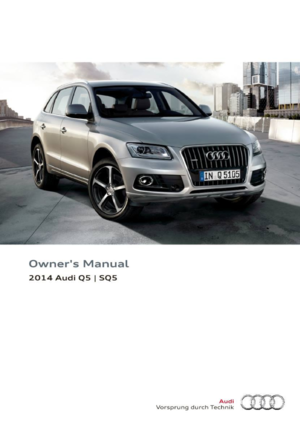 1
1 2
2 3
3 4
4 5
5 6
6 7
7 8
8 9
9 10
10 11
11 12
12 13
13 14
14 15
15 16
16 17
17 18
18 19
19 20
20 21
21 22
22 23
23 24
24 25
25 26
26 27
27 28
28 29
29 30
30 31
31 32
32 33
33 34
34 35
35 36
36 37
37 38
38 39
39 40
40 41
41 42
42 43
43 44
44 45
45 46
46 47
47 48
48 49
49 50
50 51
51 52
52 53
53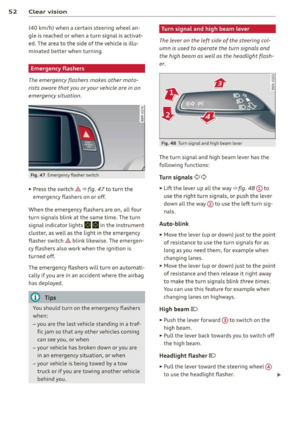 54
54 55
55 56
56 57
57 58
58 59
59 60
60 61
61 62
62 63
63 64
64 65
65 66
66 67
67 68
68 69
69 70
70 71
71 72
72 73
73 74
74 75
75 76
76 77
77 78
78 79
79 80
80 81
81 82
82 83
83 84
84 85
85 86
86 87
87 88
88 89
89 90
90 91
91 92
92 93
93 94
94 95
95 96
96 97
97 98
98 99
99 100
100 101
101 102
102 103
103 104
104 105
105 106
106 107
107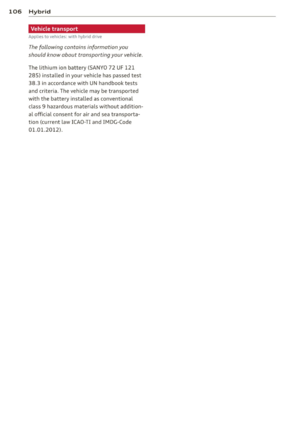 108
108 109
109 110
110 111
111 112
112 113
113 114
114 115
115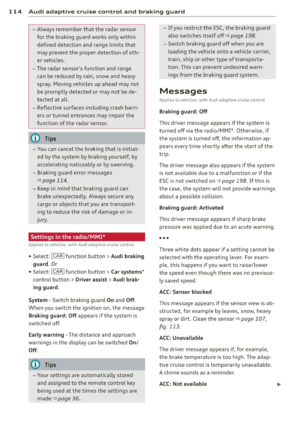 116
116 117
117 118
118 119
119 120
120 121
121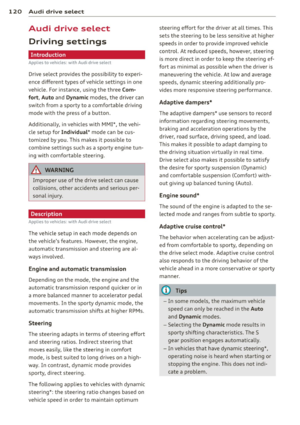 122
122 123
123 124
124 125
125 126
126 127
127 128
128 129
129 130
130 131
131 132
132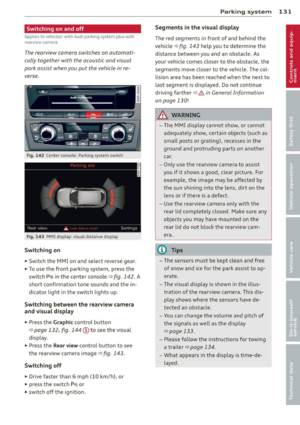 133
133 134
134 135
135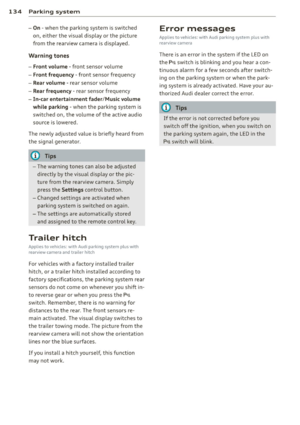 136
136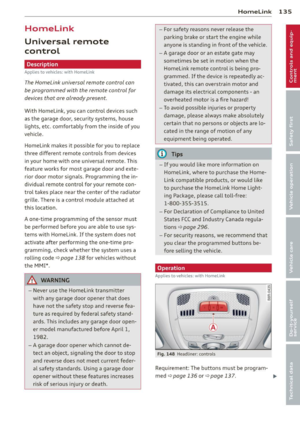 137
137 138
138 139
139 140
140 141
141 142
142 143
143 144
144 145
145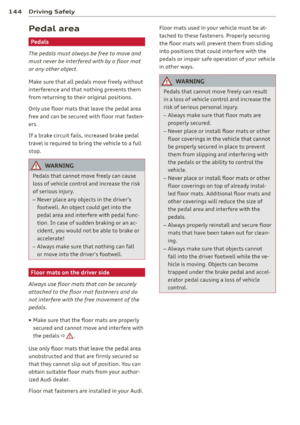 146
146 147
147 148
148 149
149 150
150 151
151 152
152 153
153 154
154 155
155 156
156 157
157 158
158 159
159 160
160 161
161 162
162 163
163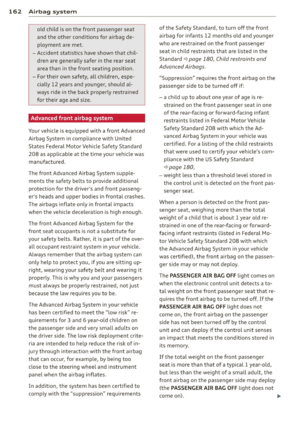 164
164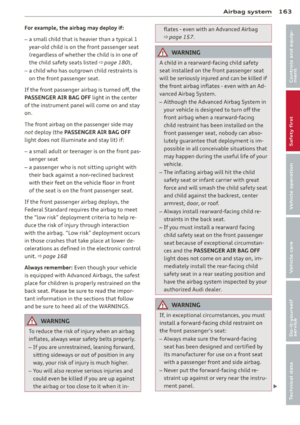 165
165 166
166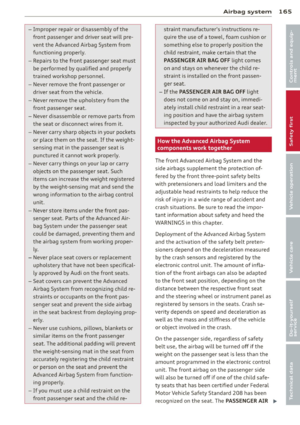 167
167 168
168 169
169 170
170 171
171 172
172 173
173 174
174 175
175 176
176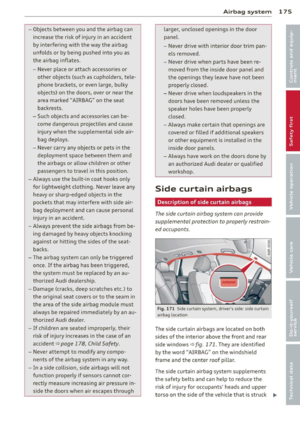 177
177 178
178 179
179 180
180 181
181 182
182 183
183 184
184 185
185 186
186 187
187 188
188 189
189 190
190 191
191 192
192 193
193 194
194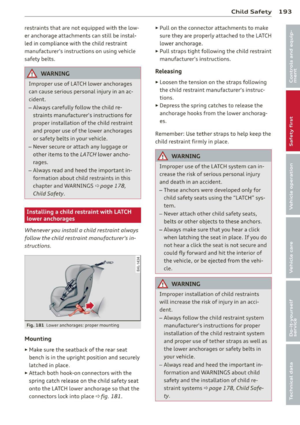 195
195 196
196 197
197 198
198 199
199 200
200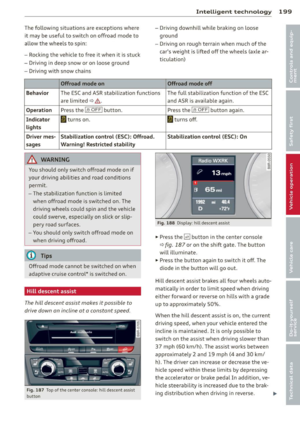 201
201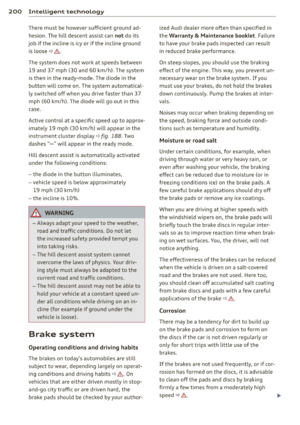 202
202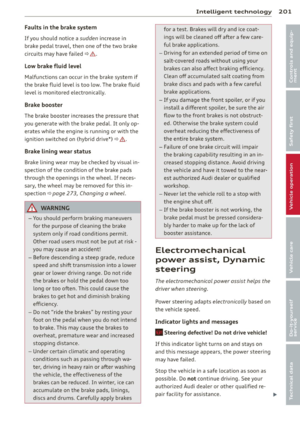 203
203 204
204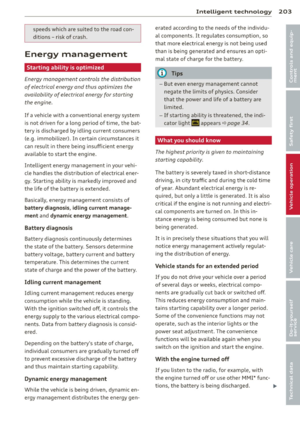 205
205 206
206 207
207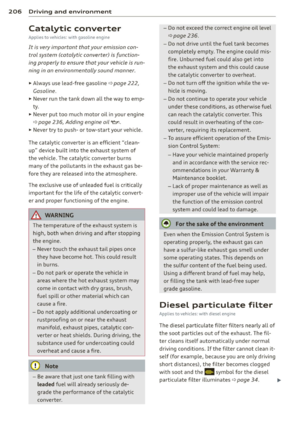 208
208 209
209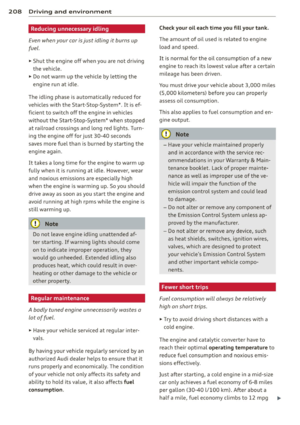 210
210 211
211 212
212 213
213 214
214 215
215 216
216 217
217 218
218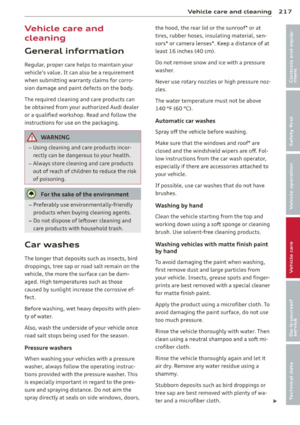 219
219 220
220 221
221 222
222 223
223 224
224 225
225 226
226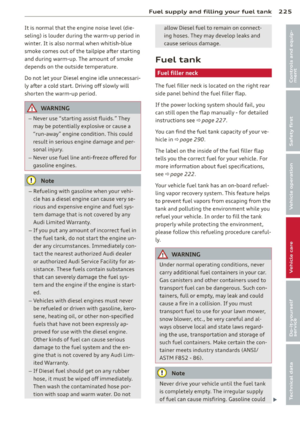 227
227 228
228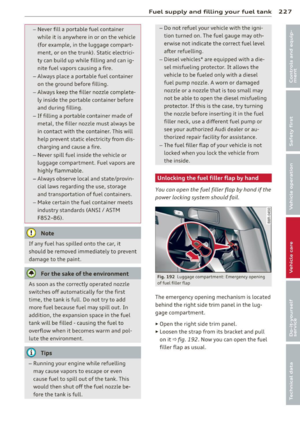 229
229 230
230 231
231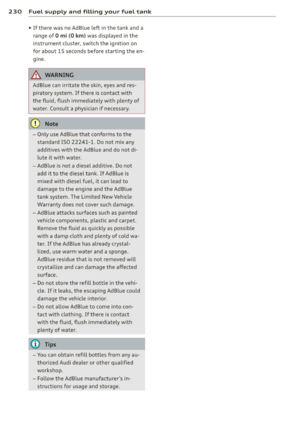 232
232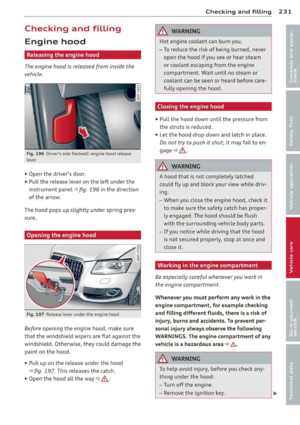 233
233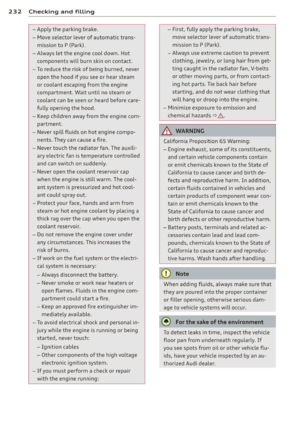 234
234 235
235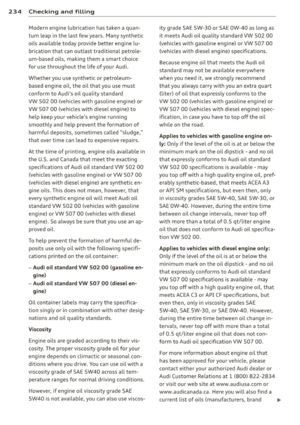 236
236 237
237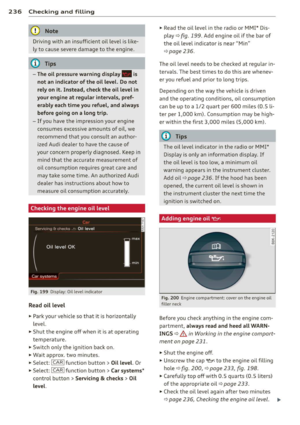 238
238 239
239 240
240 241
241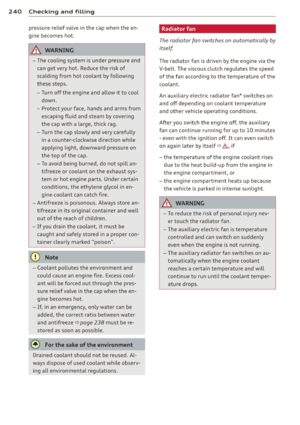 242
242 243
243 244
244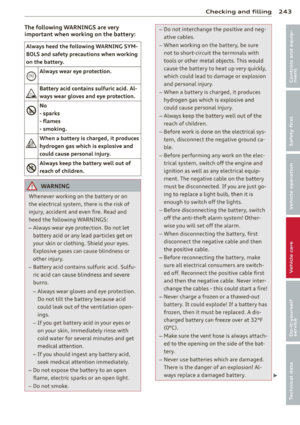 245
245 246
246 247
247 248
248 249
249 250
250 251
251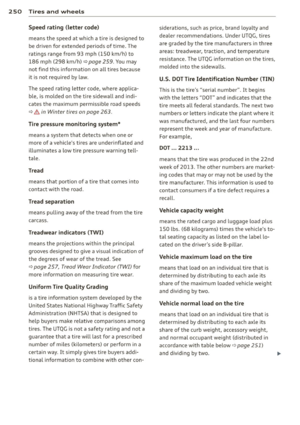 252
252 253
253 254
254 255
255 256
256 257
257 258
258 259
259 260
260 261
261 262
262 263
263 264
264 265
265 266
266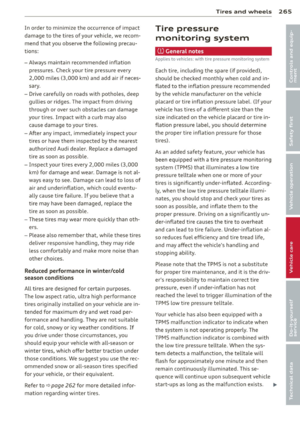 267
267 268
268 269
269 270
270 271
271 272
272 273
273 274
274 275
275 276
276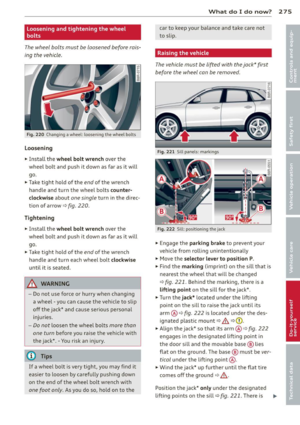 277
277 278
278 279
279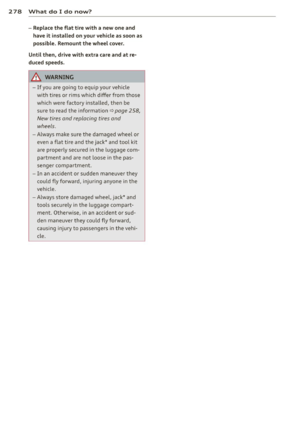 280
280 281
281 282
282 283
283 284
284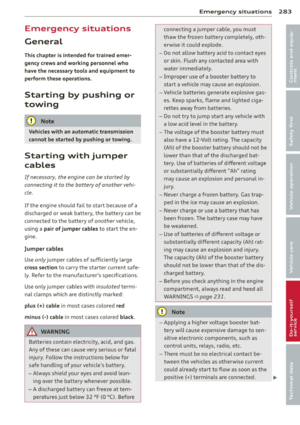 285
285 286
286 287
287 288
288 289
289 290
290 291
291 292
292 293
293 294
294 295
295 296
296 297
297 298
298 299
299 300
300 301
301 302
302 303
303 304
304 305
305 306
306 307
307 308
308 309
309 310
310 311
311 312
312 313
313 314
314 315
315






